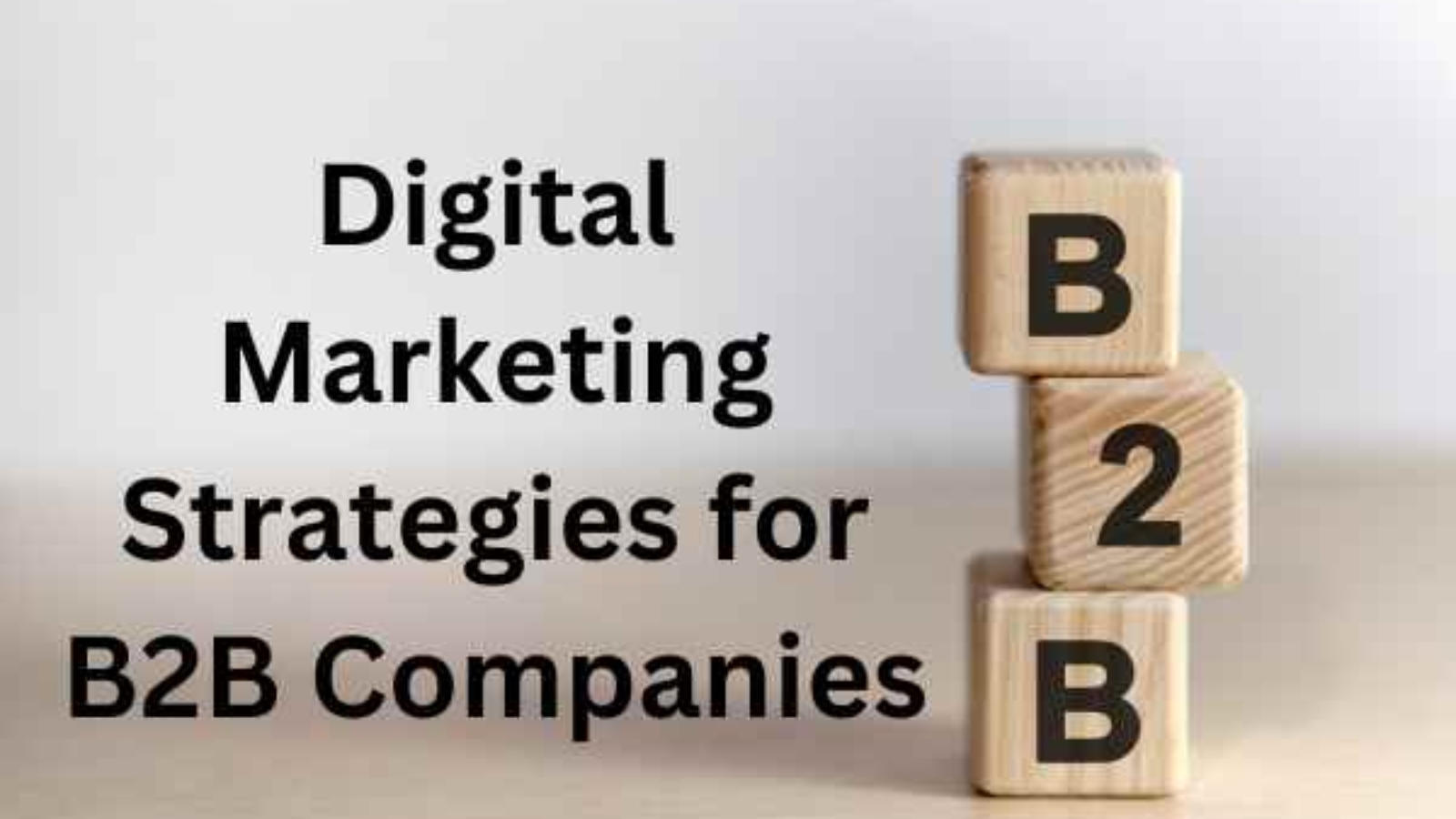In the ever-evolving world of digital marketing, B2B companies face unique challenges and opportunities. Staying ahead of the curve in 2025 requires not only awareness of the latest trends but also the ability to effectively implement strategies that drive leads and conversions. This comprehensive guide will delve into the top digital marketing strategies for B2B companies in 2025, providing practical solutions to common problems and actionable steps to enhance your marketing efforts.
Introduction
As B2B companies navigate the digital landscape, the need for innovative and effective marketing strategies has never been greater. The rapid advancements in technology, changing buyer behaviors, and increasing competition demand a strategic approach to attract and retain customers. This blog post will explore key strategies and provide problem-solving solutions to help B2B companies thrive in 2025.
1. Leveraging AI and Machine Learning for Improved Targeting and Engagement

Problem: Inefficient Targeting and Low Engagement Rates
Many B2B companies struggle with inefficient targeting and low engagement rates due to the vast amount of data and the complexity of buyer journeys.
Solution: Implement AI and Machine Learning Tools
AI and machine learning can significantly enhance your targeting and engagement efforts. These technologies analyze large datasets to identify patterns and predict behaviors, allowing for more precise targeting and personalized marketing.
Steps to Implement:
- Adopt AI-Powered Marketing Platforms: Invest in AI-driven marketing platforms like HubSpot, Marketo, or Salesforce Einstein to automate and optimize your campaigns.
- Use Predictive Analytics: Utilize predictive analytics to forecast customer behavior and tailor your marketing efforts accordingly.
- Implement Chatbots and Virtual Assistants: Deploy AI-powered chatbots to engage with visitors in real-time, providing instant support and capturing leads.
2. Implementing Account-Based Marketing (ABM) for High-Value Accounts

Problem: Ineffective Marketing to High-Value Accounts
Targeting high-value accounts without a focused strategy often leads to wasted resources and missed opportunities.
Solution: Adopt an Account-Based Marketing Approach
Account-Based Marketing (ABM) focuses on personalized marketing efforts directed at specific high-value accounts, ensuring a higher ROI.
Steps to Implement:
- Identify Target Accounts: Use data and insights to identify high-value accounts that align with your business goals.
- Personalize Content and Messaging: Develop personalized content and messaging tailored to the needs and challenges of each target account.
- Engage Across Multiple Channels: Utilize a multi-channel approach, including email, social media, and direct mail, to engage target accounts effectively.
3. Creating Personalized Content at Scale
Problem: Generic Content Leading to Low Engagement
Generic, one-size-fits-all content fails to resonate with diverse B2B audiences, leading to low engagement and conversions.
Solution: Scale Personalized Content
Personalized content addresses the specific needs and pain points of your audience, leading to higher engagement and conversion rates.
Steps to Implement:
- Segment Your Audience: Use data to segment your audience based on factors like industry, company size, and buyer persona.
- Develop Dynamic Content: Create dynamic content that automatically adjusts based on the viewer’s profile and behavior.
- Use Personalization Tools: Leverage tools like Optimizely or Dynamic Yield to deliver personalized experiences at scale.
4. Utilizing Data Analytics for Better Insights and Decision-Making
Problem: Lack of Actionable Insights from Data
Many B2B companies collect vast amounts of data but struggle to extract actionable insights that drive decision-making.
Solution: Implement Advanced Data Analytics
Advanced data analytics can transform raw data into valuable insights, guiding your marketing strategies and decisions.
Steps to Implement:
- Choose the Right Analytics Tools: Invest in robust analytics tools like Google Analytics 360, Tableau, or Power BI.
- Track Key Metrics: Focus on key performance indicators (KPIs) such as Customer Acquisition Cost (CAC), Customer Lifetime Value (CLV), and engagement metrics.
- Regularly Review and Adjust: Continuously monitor and analyze your data to identify trends and adjust your strategies accordingly.
5. Enhancing Social Media Presence for Greater Reach and Engagement
Problem: Low Visibility and Engagement on Social Media
Despite the potential of social media, many B2B companies struggle to gain visibility and engagement on these platforms.
Solution: Strategic Social Media Marketing
A strategic approach to social media can enhance your visibility, reach, and engagement with your target audience.
Steps to Implement:
- Identify the Right Platforms: Focus on platforms where your audience is most active, such as Facebook, Instagram, Youtube, LinkedIn and Twitter.
- Share Valuable Content: Regularly post valuable content, including thought leadership articles, industry news, and case studies.
- Engage with Your Audience: Actively engage with your audience by responding to comments, participating in discussions, and connecting with industry influencers.
6. Optimizing for Search Engines to Increase Organic Traffic
Problem: Low Organic Search Visibility
Low visibility in search engine results can significantly reduce your ability to attract organic traffic and leads.
Solution: Implement Advanced SEO Strategies
Effective SEO strategies can boost your search engine rankings, driving more organic traffic to your site.
Steps to Implement:
- Focus on E-E-A-T: Enhance your website’s Experience, Expertise, Authoritativeness, and Trustworthiness (E-E-A-T) by publishing high-quality content and securing backlinks from reputable sources.
- Optimize for Long-Tail Keywords: Target long-tail keywords relevant to your industry to capture more specific search queries.
- Implement Technical SEO Best Practices: Ensure your website is technically optimized, including fast loading times, mobile-friendliness, and secure connections (HTTPS).
7. Investing in Video Marketing for Enhanced Engagement
Problem: Low Engagement with Traditional Content Formats
Traditional content formats may not effectively capture and retain your audience’s attention.
Solution: Leverage Video Marketing
Video marketing can significantly enhance engagement, conveying complex information in an easily digestible format.
Steps to Implement:
- Create a Variety of Videos: Produce different types of videos, such as explainer videos, customer testimonials, and webinars.
- Optimize Videos for SEO: Ensure your videos are optimized for search engines by using relevant keywords in titles, descriptions, and tags.
- Promote Videos Across Channels: Distribute your videos across multiple channels, including your website, social media, and email campaigns.
8. Ensuring Data Privacy and Compliance
Problem: Compliance with Data Privacy Regulations
Navigating data privacy regulations can be challenging, with significant implications for non-compliance.
Solution: Prioritize Data Privacy and Compliance
Ensuring compliance with data privacy regulations builds trust with your audience and avoids legal repercussions.
Steps to Implement:
- Understand Relevant Regulations: Stay informed about regulations affecting your business, such as GDPR, CCPA, and others.
- Implement Transparent Data Practices: Be transparent about data collection and use practices, and provide clear privacy policies.
- Invest in Secure Data Handling: Ensure robust data security measures are in place to protect customer data.
Conclusion
Staying competitive in the B2B digital marketing landscape in 2025 requires a strategic approach, leveraging advanced technologies and personalized marketing efforts. By addressing common challenges and implementing the solutions outlined in this guide, B2B companies can enhance their lead generation and conversion efforts, driving sustainable growth and success.
To take your Business to the next level? contact us for a personalized consultation. Let us help you transform your marketing efforts and achieve your business goals in 2025.

